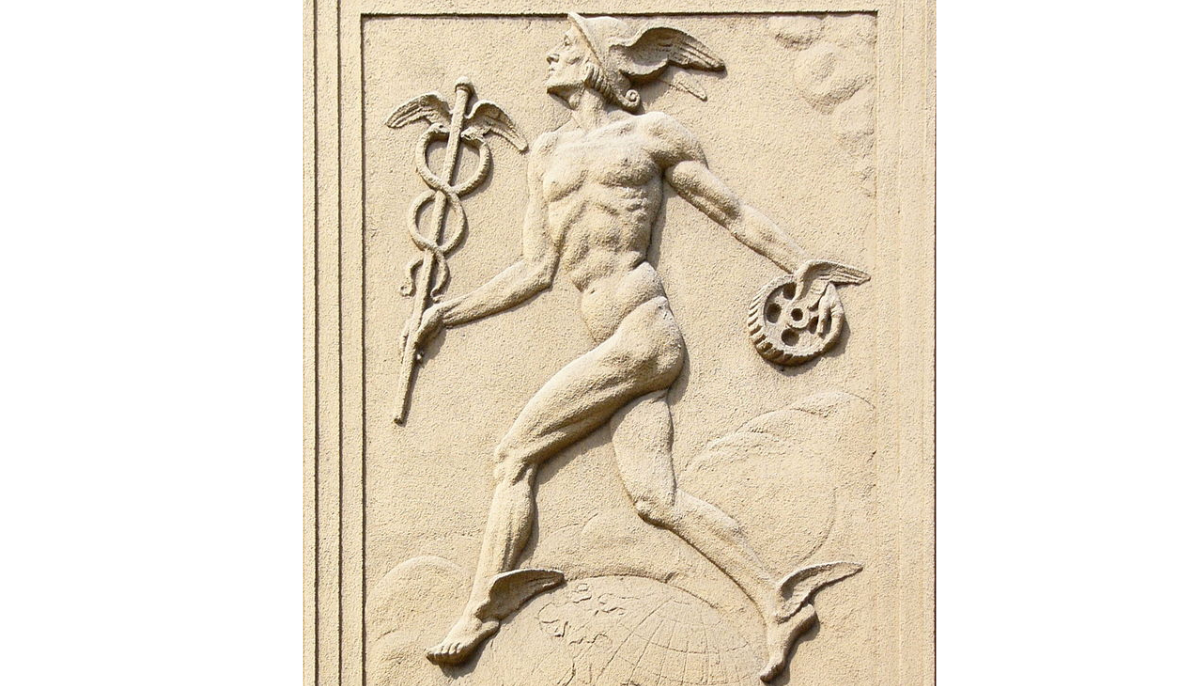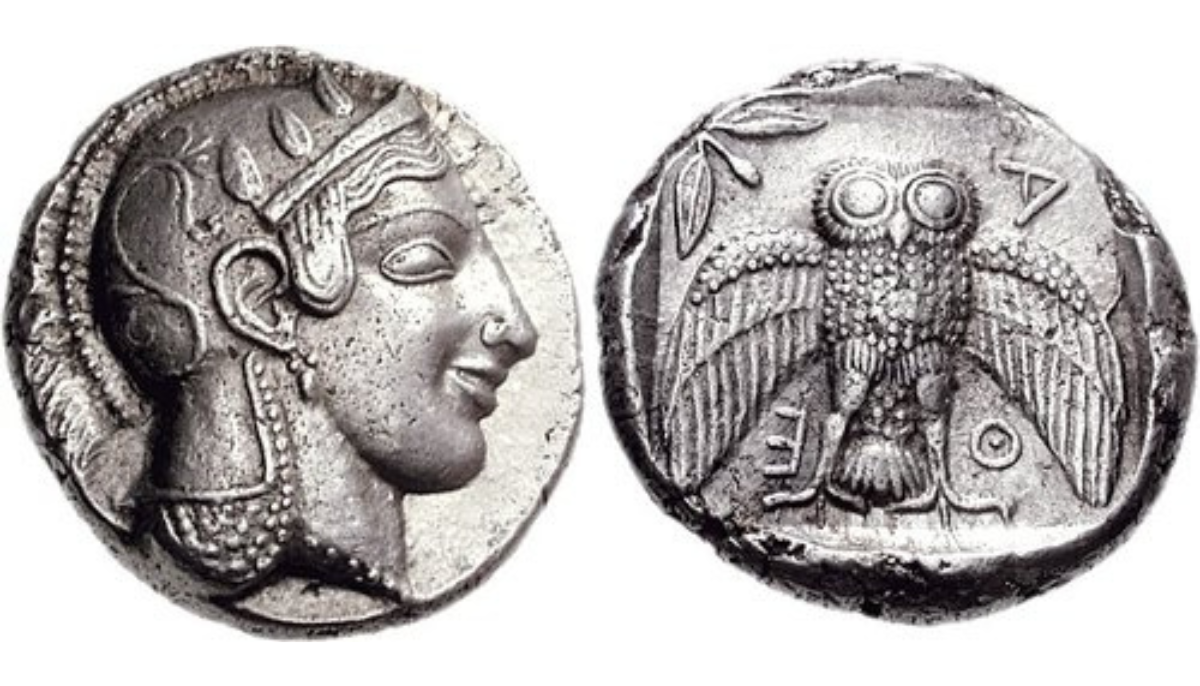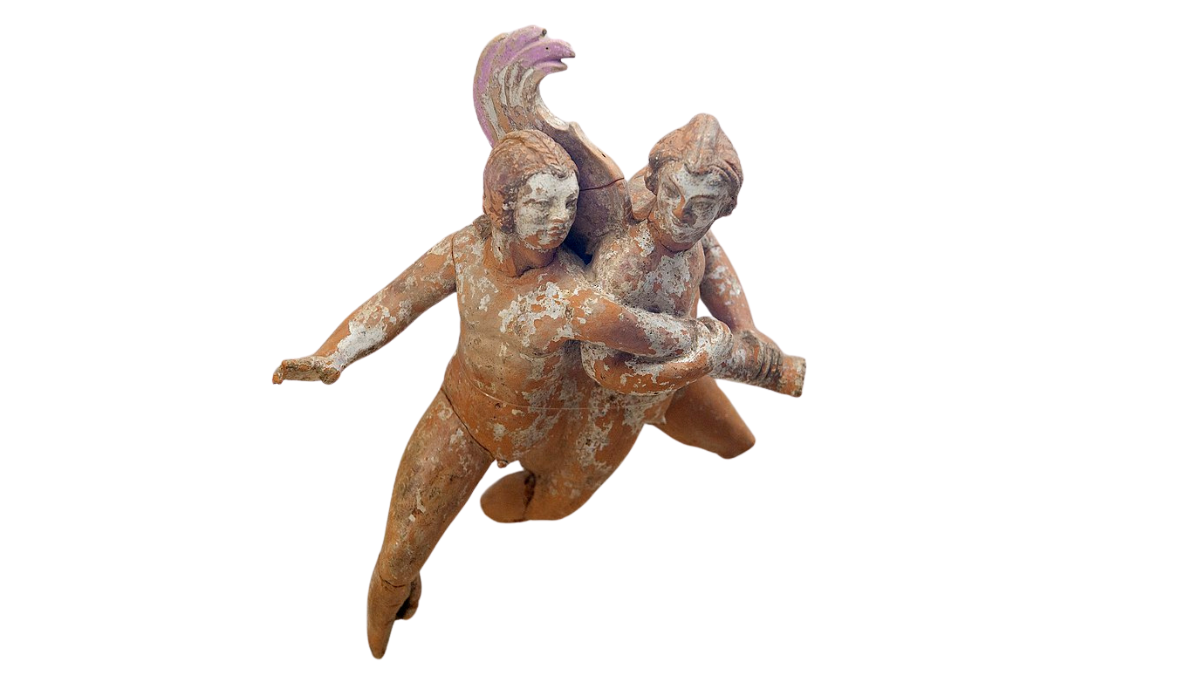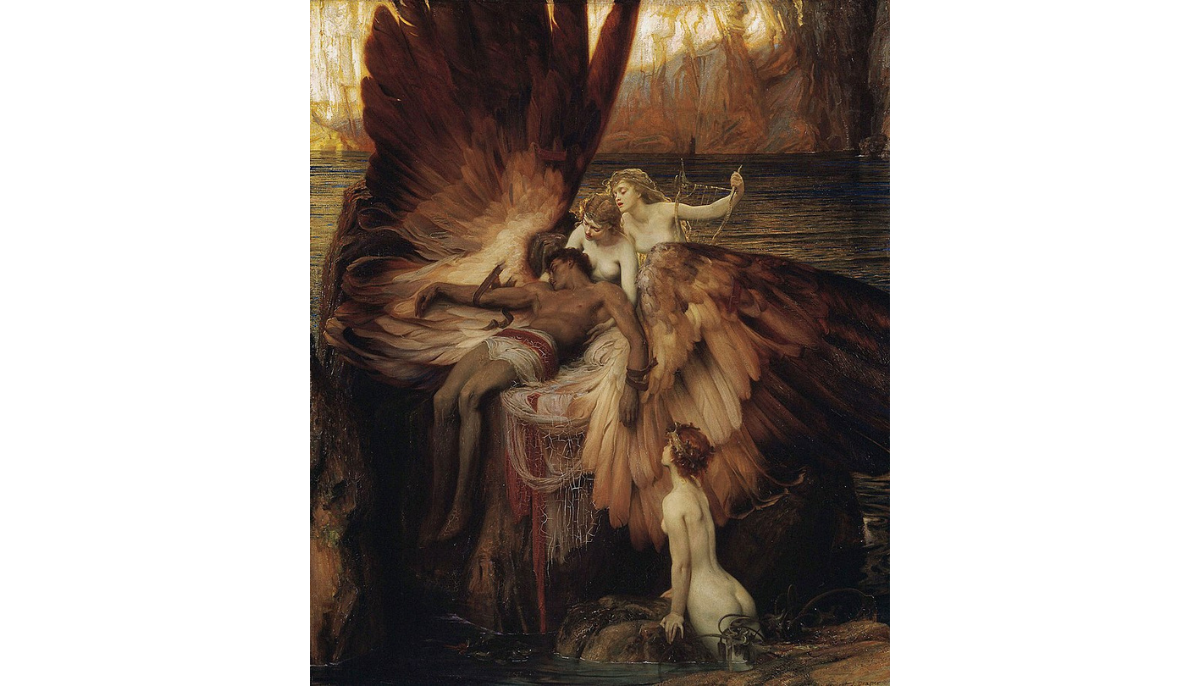In Greek mythology, wings hold a special place, adorning gods, goddesses, and heroes alike. We’ll explore the most renowned winged gods and goddesses, from the swift-footed Hermes to the wise-eyed Athena, uncovering the stories and symbolism behind their celestial plumage.
But there’s more to these myths than just divine beings. We’ll also highlight lesser-known winged heroes and their epic tales. From the legendary Achilles, whose story intertwines with the divine, to the tragic flight of Icarus, these narratives offer a glimpse into Greek mythology’s heroic and often complex nature.
So, let’s take flight into this mythical realm, where wings aren’t just for soaring in the sky but also for conveying messages, embodying swiftness, and symbolizing transformation.
Symbolism of winged gods in Greek mythology
In Greek mythology, wings are not merely physical attributes but potent symbols. They represent swiftness, divine power, and the ability to convey messages across realms.
The imagery of winged deities bridges the human with the celestial, hinting at a world beyond our ordinary senses.
The Symbolism of Wings
Wings in Greek mythology often signify more than just the ability to fly; they embody the qualities of speed and divine intervention. This symbolism extends to the representation of gods and goddesses who bear them.
For instance, Hermes is instantly recognizable by his winged sandals, embodying swiftness and the ability to traverse between gods and mortals effortlessly. Similarly, with her rainbow-colored wings, Iris serves as a divine messenger, particularly for Hera.
Beyond Hermes and Iris, other mythical figures carry this symbolic mantle. The Erotes, often depicted with wings, are messengers of love, while Thanatos, associated with death, has a more somber role.
Wings as a Symbol of Transformation

In the Titanomachy, the war between Olympians and Titans, Arke, the messenger of the Titans, plays a pivotal role, her wings symbolizing both speed and allegiances shifting in divine conflicts.
The story of Arke exemplifies the transformative power of wings. After the Titanomachy, her wings were taken, symbolizing a shift in power.
Evolution from Animalistic to Divine
Greek mythology likely has roots that extend far beyond our written records. Many of these myths and deities probably originate from older oral traditions and religions, now lost in the mists of time. This ancient lineage suggests that the Greek gods we know might have begun as more animal-like beings before gradually transforming into the human-like figures familiar to us.
The prevalence of human-animal hybrids in Greek myths, like the Minotaur with its bull’s head and human body, underscores this blend. These hybrids symbolize a range of themes, from primal instincts to the complexity of human nature. They are physical manifestations of the ancient Greeks’ understanding of their world – a world where gods and creatures transcended the boundaries of form.
Winged Gods: A Symbolic Transformation
Winged gods are a fascinating instance of this human-animal hybridization. They exemplify the gradual shift from animalistic depictions to more human forms. Consider Hera, often referred to as “cow-eyed.” This description, likely more literal in ancient times, suggests an earlier form where Hera was closely aligned with or resembled a cow, a sacred animal in many cultures.
Similarly, Athena’s depiction with “terrible/flashing” eyes, as mentioned in the Iliad, might allude to her association with the owl. This link suggests a time when Athena’s portrayal was more theriomorphic, possibly incorporating physical aspects of an owl – an animal symbolizing wisdom and mystery.
From Animal to Divine
The evolution from animalistic to divine features in Greek mythology reflects a shift in how ancient people related to their gods. As societies changed, so did their religious and mythological figures, gradually taking on more human characteristics while retaining some animalistic origins.
This shift is evident in how wings, initially perhaps a literal feature of a deity’s animal form, became a symbol of divine power, swiftness, and the ability to traverse between different realms.
Famous Winged Gods and Goddesses in Greek Mythology
Winged gods and goddesses are fascinating for their stories and what they represent – from swiftness and communication to victory and divine messages.
Let’s explore some of these famous figures and the symbolism behind their wings.
Hermes

Hermes, known for his speed and cunning, is often depicted with winged sandals and sometimes a winged helmet. These wings symbolize his role as the messenger of the gods, able to move swiftly between the mortal and divine worlds.
Hermes plays various roles in myths – from guiding souls to the underworld to delivering messages for Zeus. His wings are not just physical attributes; they represent the qualities of agility, eloquence, and cleverness.
Sources like Homer’s Odyssey and Iliad depict Hermes as a guide and protector, showcasing his diverse roles and the significance of his wings in accomplishing his divine duties.
Nike
![The Winged Victory of Samothrace, also called the Nike of Samothrace,[2] is a marble Hellenistic sculpture of Nike (the Greek goddess of victory), that was created about the 2nd century BC](https://historyhogs.com/wp-content/uploads/2023/12/Nike.png)
Nike, the goddess of victory, is often portrayed with wings, symbolizing the swiftness and elevation associated with success. Unlike Hermes, whose wings are more about communication, Nike’s wings represent triumph and the fleeting nature of victory.
She is typically seen in ancient art and sculpture, like the famous Winged Victory of Samothrace, an emblem of her role as a divine harbinger of victory. Her depictions, particularly in Hellenistic art, emphasize triumph’s dynamic and powerful nature as if victory itself could swoop down at any moment.
Iris

Iris, another messenger of the gods, particularly for Hera, is depicted with wings and is often associated with the rainbow. Her wings allow her to travel swiftly from one end of the world to the other, symbolizing communication and the link between heaven and earth.
Iris’s connection to the rainbow is a visual metaphor for her role as a bridge between divine messages and the human world. Sources like Homer’s epics often portray her fulfilling her duties as a divine messenger, using her wings to navigate the vast expanse between gods and mortals.
Athena

In her early depictions, especially in archaic black-figure pottery, Athena is portrayed with a feature that markedly differs from her classical representations: enormous bird wings. These wings are indicative of her pre-Hellenic, possibly Minoan, origins, where she may have been envisioned as a more overtly bird-like or winged deity.
Athena’s transition from a winged goddess to a more anthropomorphic figure, typically accompanied by an owl, reflects this cultural and mythological evolution. The owl, symbolic of wisdom and keen sight, becomes a central aspect of her identity, replacing her earlier, more literal bird-like characteristics.
Her early winged depictions underscore a deep-rooted link to a more ancient past, where the divine was often visualized in forms that blended human and animal, bridging the celestial with the natural world.
Eros

Erotes are the winged gods of love and desire in Greek mythology. Eros, the most famous among them, is typically depicted as a youthful figure with wings, symbolizing love’s flighty and unpredictable nature. The wings of Eros and the Erotes are not just physical attributes but also metaphors for how feelings of love can seemingly swoop into one’s life unexpectedly and with great intensity.
In myths and artistic representations, Eros and the Erotes are often shown wielding a bow and arrow, with which they strike the hearts of gods and mortals alike, instilling love and desire. Their role as messengers of love is significant in many Greek stories, where they often play a part in the romantic affairs of both deities and humans.
The portrayal of Eros and the Erotes in sources like Hesiod’s Theogony and various classical artworks underscores the importance of love and desire in the Greek mythological narrative.
The story of Eros and Psyche is one of the most enchanting and enduring love stories in Greek mythology. Captivating hearts and imaginations through the ages, this tale weaves a narrative of love, betrayal, and reconciliation that transcends time. Its popularity has sparked countless retellings, each adding a new dimension to this timeless myth.
Himeros
Himeros is Eros’s twin, the Greek god of sexual desire and unrequited love. Like his counterpart Eros, Himeros is represented as a winged youth, embodying the reckless and often overwhelming nature of passion and longing.
His wings are not just ornamental but symbolic of the unpredictable and swift nature of desire that can sweep over individuals with an uncontrollable intensity.
Thanatos
Thanatos is the personification of death, often portrayed with an aura of inevitability and solemnity. His character, as established by Hesiod in Theogony, presents him as a formidable and relentless force. Hesiod describes him as an entity whom even the sun does not shine upon in its daily journey across the sky. This vivid imagery sets Thanatos apart from other gods, dwelling in darkness, away from the sun’s life-giving rays.
Hesiod paints a picture of Thanatos as an implacable and unyielding god with a heart of iron and a spirit as pitiless as bronze. This depiction emphasizes his role as an indiscriminate force, capturing mortals in an unbreakable grip and eliciting fear even among the deathless gods. In this portrayal, Thanatos embodies the inescapable nature of death, a force that holds fast to those it seizes and is viewed with dread by both mortals and gods alike.
Arke
Arke’s story is one of Greek mythology’s more intriguing yet lesser-known tales. A sister to Iris, she sided with the Titans during the Titanomachy, the epic war between the Titans and the Olympians. Arke’s role as a messenger for the Titans was akin to Iris’s role for the Olympians, but her fate was markedly different. After the defeat of the Titans, Arke was punished for her allegiance – her wings were taken from her, symbolizing the loss of her divine powers and status.
The story of Arke reflects the themes of loyalty and the consequences of choosing sides in a cosmic conflict. In Greek mythology, her loss of wings is not just a physical punishment but a symbolic representation of a fall from grace and divine favor. Her narrative provides insight into the complex dynamics of divine politics and the harsh retributions faced by those who defied the will of the more powerful Olympian gods.
The Anemoi
In Greek mythology, the Anemoi are the gods of the winds, each representing a different cardinal direction and a unique aspect of weather. As winged deities, they personify the swiftness and power of the wind, capable of bringing everything from gentle breezes to destructive storms.
Each of the Anemoi, Boreas (the North Wind), Notus (the South Wind), Eurus (the East Wind), and Zephyrus (the West Wind), plays a significant role in various myths, controlling the weather and thereby affecting the lives of gods and mortals alike.
Their representation in art, from vase paintings to temple sculptures, often emphasizes their dynamic and powerful nature. As winged gods, the Anemoi symbolize the omnipresent and uncontrollable power of the natural world, a theme central to many Greek myths.
Winged Greek Heroes

Alongside the pantheon of gods and goddesses are tales of remarkable heroes, many of whom are celebrated for their connections to wings. We’ve gathered a few of the most well-known stories of these winged heroes.
Achilles and the wings of arke
Though he himself isn’t depicted with them, Achilles has an intriguing connection to wings. Earlier, we mentioned Arke, the messenger of the Titans, who lost her wings after the Titanomachy. These very wings were later given to Achilles, making him “Podarkes,” or swift-footed.
This link between Achilles and Arke’s wings highlights his near-supernatural abilities as a warrior. It’s a way of showing how a mortal hero can be elevated, almost to the level of a god, through the power of the divine. Achilles’ story is a classic example of how heroes in Greek mythology often straddle the line between human and godlike qualities.
The Myth of Icarus
One of the most touching stories in Greek mythology is about Icarus. He was the son of Daedalus, the master craftsman, who made a pair of wings out of feathers and wax. Icarus used these wings to escape from Crete, but the story turns tragic when he flies too close to the sun. The wax in his wings melts, and he falls into the sea.
Icarus’s story is a lesson about the dangers of hubris and the limits of human ambition. His wax wings are a symbol of fragile dreams and the risks of reaching too high or too fast. This tale has been a source of inspiration and warning through the ages, reminding us of the balance between aspiration and humility.
Perseus
Perseus, another renowned hero of Greek mythology, had his own unique encounter with wings. He is best known for defeating Medusa, the Gorgon with snakes for hair. In his quest, Perseus received winged sandals from Hermes, which granted him the ability to fly. This gift was crucial in his mission, allowing him to evade danger and ultimately conquer Medusa.
Perseus’s winged sandals are emblematic of divine assistance and the power of ingenuity and courage. His story celebrates not just physical strength, but also the importance of cleverness and the right tools in overcoming seemingly insurmountable challenges. Like other Greek heroes, Perseus’s tale intertwines the human and the divine, showcasing how heroes can achieve great deeds with a bit of help from the gods.
These stories, rich in symbolism and meaning, offer a window into the ancient Greek understanding of the world and their interpretation of concepts like love, death, victory, and the human spirit.
For those intrigued by these myths and eager to delve deeper, our curated list of favorite Greek mythology books offers a treasure trove of knowledge and entertainment.






